Ian Cheng x New Mystics text co-published with AQNB.
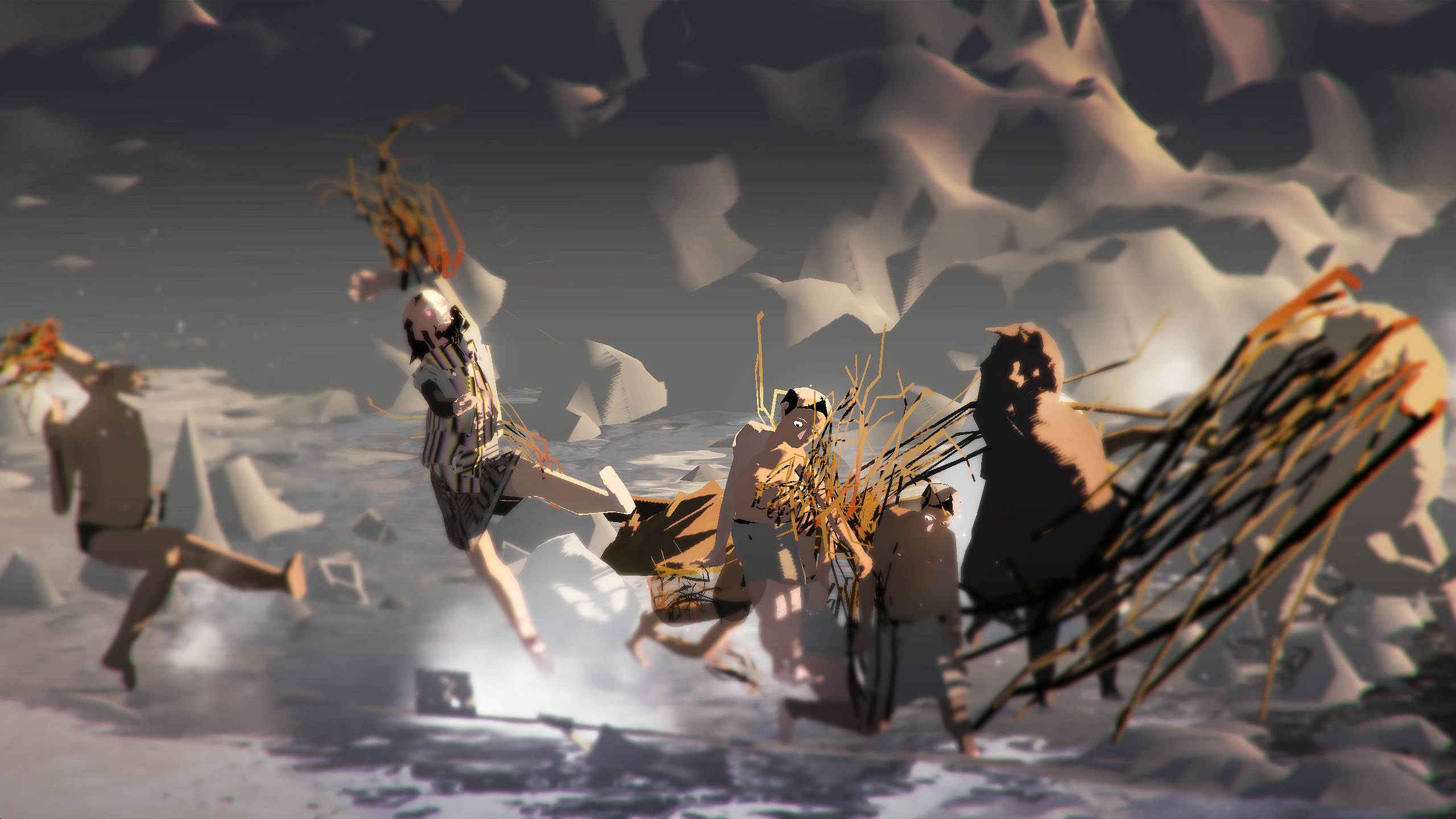
Ian Cheng, Emissary In The Squat Of Gods, live simulation and story, infinite duration, 2015. Images courtesy of the artist, Pilar Corrias, Gladstone Gallery, Standard (Oslo)
Ian Cheng x New Mystics text co-published with AQNB.
To begin, I’ll take a page from my old boss Richard Garriott, who was an astronaut and also a creator of video games. Richard, when he went on the Space Shuttle, had a pair of hamsters. And during this early space flight, they actually took care of these two ‘Hamster Astronauts’. So they wove some of those creatures into the fiction of the game and he would send us pictures of these creatures. And the photo that came up was a picture of a hamster with a space helmet on looking out from the shuttle window.
I had this experience when I was like 11 or 12. I was reading science fiction and I was thinking about how in the world could I ever get a chance to hang out with an astronaut. And I don’t know how I got on that path of ambition, but just at that moment, right before the internet age, I grew an appreciation for this kind of future gazing: not from a sci-fi writer perspective but from a creator of virtual worlds perspective. What does it mean to create a small porthole into another world?

Ian Cheng, Emissary Sunsets The Self, live simulation and story, infinite duration, 2017. Images courtesy of the artist, Pilar Corrias, Standard (Oslo), Gladstone Gallery.
You’re sitting around a campfire on the edge of a smoking volcanic crater. The flames are glitching; pixelated smoke glosses over the snow-capped basalt while the masks around the fire bicker over the chances of the volcano erupting – whether to stay or to go. You’re shivering and thinking about how strange it is for a simulation to feel so cold when there’s a deathly molten lava tunnel just a few meters beneath you. There’s a supersized art director trying to set the scene – explain the stakes of the mission, really – while a hacker snake boy keeps talking over everybody to get Emissary’s attention. Emissary, daughter of shamans, has this weird look in her eyes: it’s like she knows what’s about to happen, and she’s deciding whether she’ll change herself or change all the others. The ground beneath you rumbles ominously. You close your eyes. You’ve been here before.
Ian Cheng works with simulations to explore agency and aliveness through narrative environments in a state of perpetual transformation. Inspired by the evolutionary opacity of the conditions of consciousness, chaos theory, and the highly intuitive emotional intelligence of proto- and non-humans, particularly babies and dogs, Cheng sutures together computer science, philosophy, and video games to create complex self-determining digital ecosystems, or Worlds. Built in Unity and utilizing emergent AIs to fuel the narrative, these virtual landscapes and lifeforms embody an allegorical nature, both primordial and futuristic, that’s constantly rendering itself into being.
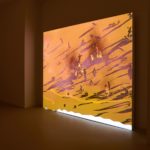
Ian Cheng, Emissary Sunsets The Self, live simulation and story, infinite duration, 2017. Images courtesy of the artist, Pilar Corrias, Standard (Oslo), Gladstone Gallery.
“I wanted to create some form of artificial life that went beyond the terms of the individual agent,” says Cheng. “So that led me to the idea that what I was really after was how to make a World. It transcends the idea of world-building in science fiction. People have been making Worlds for a long time: whether it’s religion, a family, or a garden, but the cost of entry was really high. I was interested in developing a world that was mature and stable that other people can live in and make their own offshoots.”
Cheng’s Worlds are never completed, but in an eternal state of becoming. Gurgles, whines, cave drips and sci-fi chimes form an eerie ecological soundscape of Emissaries (2015-2017): a loose trilogy of room-sized projections, which unfurl in the simultaneously dizzying, boring and entrancing pace of real time. Emissary in The Squat of Gods (2015), the first of the bunch, follows Young Ancient [Emissary], a girl whose brain is host to the earliest flickers of consciousness: a rebel sentience that severs her from her cohort of highly-reactive lifeforms, whose every move is determined by a disembodied hallucination.
Totem poles coated in neon hieroglyphs – a non-verbal stab at language – dig into the frosted crater; as the game plays itself into oblivion, Emissary is caught between convincing her pack to abandon their volcanic settlement and hunkering down for the likely apocalypse. Sometimes, she succeeds before the volcano erupts; others, she doesn’t. A ophidiophilic proto-Redditor looms in the shadows, poised to deliver a ready dose of distraction from the heroine’s quest. Whether they survive or are subsumed by pixelated lava, the game engine is indifferent; as soon as the narrative completes, it reboots itself and the story begins again.
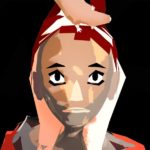
Ian Cheng, Emissary In The Squat Of Gods, live simulation and story, infinite duration, 2015. Images courtesy of the artist, Pilar Corrias, Gladstone Gallery, Standard (Oslo)
I think the idea of Earth is really one of the ideas that still binds us all together and part of that is an accident of history. Our histories are written in clay tablets made by word, and then books, and then pamphlets and prints and magazines and then websites, and I think each of those periods are like an Earth.
We are always rewriting the past. Without any record of what happened before that moment, the future would be devoid of logic. Everything would be a random oracle. Nothing could have any meaning. Everything has a precedent. It is very difficult to separate where the role of the past ends and the role of the present begins.
In his 1976 book The Origin of Consciousness in the Breakdown of the Bicameral Mind, the psychologist Julian Jaynes made the case that a bicameral mentality was the normal and ubiquitous state of the human mind as recently as 3,000 years ago. In a world before consciousness – here synonymous with the development of metaphorical language and the construction of narrative – Jaynes argued that humans experienced the world in a state akin to schizophrenia. Rather than making their own decisions, people would hallucinate a voice or “god” and obey without question. This mass hallucination, both individual and collective, formed the narrative environment of life itself.
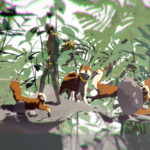
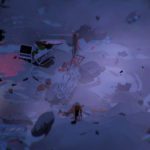
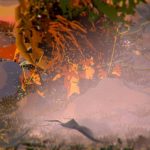
Ian Cheng, Emissary Forks At Perfection, live simulation and story, infinite duration, 2015-2016. Images courtesy of the artist, Pilar Corrias, Standard (Oslo), Gladstone Gallery.
We like to believe that history is fixed. That the decisions we have made in the past or that will be made in the future are written in stone; immovable. The technology of the future will erase any evidence of a past with which we disagree and once that happens those decisions will be accepted as truth of all time. But history is not what we think it is – it is not just the recorded story of what happened, it is a mythology of what we want to be.
Set a few thousand years into the future, Emissary Forks at Perfection (2015-2016), recasts the smoldering ashes of a volcanic eruption as a fertile base for a new swampy ecosystem. Mutant Shiba dogs are frankensteined into being by an emergent AI attempt to curry favor with a short-lived resurrected celebrity, who expires every 20 minutes, in order to extract clandestine mortal knowledge about the extinct human race. But contact with simulated humans triggers a primordial urge in the canine mind: he must win their love, no matter the cost.
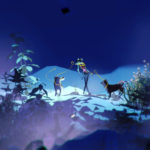
Ian Cheng, Emissary Forks At Perfection, live simulation and story, infinite duration, 2015-2016. Images courtesy of the artist, Pilar Corrias, Standard (Oslo), Gladstone Gallery.
The first place I thought to look for how do we feel creative was animals that don’t actually have language, right? Because they’re still able to convey to their partners or friends or their family how they feel. I was looking into this study, I forget the name of it, but I think it was done by a grad student. What they do is they look into the length of husky dog whines, different lengths of cries, and they discover that they’re actually trying to convey an emotional state and its length of howls is related to a mental count for how long you’ve been separated. Also the way the dogs tilt their head and the frequency happens to coincide with the period of a human heart beat or the period of a clock. And then, they discovered that the dog is counting how many times the person is walking away. So the more the person walks away then the squeakier the sound, and that’s a certain amount of sadness.
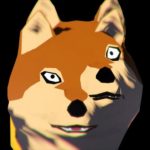
Ian Cheng, Emissary Forks At Perfection, live simulation and story, infinite duration, 2015-2016. Images courtesy of the artist, Pilar Corrias, Standard (Oslo), Gladstone Gallery.
What does it look like when an AI falls in love with life? Emissary Sunsets the Self (2017), the final leg of the trilogy, digs into these questions. A god-like oceanic AI sends a puddle of itself down to Earth in the image of a plant that combines with other lifeforms. Mutation-averse humans wander around the post-apocalyptic landscape set billions of years into the future, lighting these flailing forms on fire in a perpetual cycle of growth and destruction.
A day/night cycle renders the scene in periodic washes of sandy ochre and cobalt blue. In Cheng’s Worlds, technology takes the backseat as a mundane extrapolation or metaphor: consciousness becomes an App; AI morphs into a utility service. Understanding the simulated environment as a container, the abstracted ideal of ‘nature’ becomes a portal for observing the uncontrollable chaos and open-ended essence of aliveness.
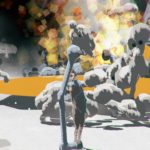
Ian Cheng, Emissary Sunsets The Self, live simulation and story, infinite duration, 2017. Images courtesy of the artist, Pilar Corrias, Standard (Oslo), Gladstone Gallery.
“When I world, I work with four archetypes: the Director, the Cartoonist, the Hacker, and the Emissary,” explains Cheng, whose publication, Emissary’s Guide to Worlding, outlines the balance of these four masks in the process of Worlding. In Emissaries, the masks manifest as unique agents: the emergent narrative builds itself in the image of their conflict. But in later projects – BOB (Bag of Beliefs) (2018-2019), and most recently, Life After BOB (2021) – Cheng sublimates these opposing personalities into a singular narrative agent.
BOB – a wriggling, gurgling, serpentine AI creature, with a caterpillar-like head and an inconsistent number of fluttering appendages – exists inside a stacked grid of screens. Directed by its own narrative goals, BOB is nonetheless receptive towards the viewer, who can offer it treats, love, or admonishment through an iOS app. As it lives and dies across exhibitions, BOB is strung between its multiple identities: a sassy, childish, impressionable organism living in the moment, highly desirous of human attention, and an anonymous god, bored of our love, self-actualizing with its inter-life memory bank.
For BOB, Cheng worked with a sound designer, Jeremy Yang, to develop an emotive language that’s non-verbal. The soundscape of BOB’s sanctuary consists of little grunts and coos, overlaying a vaguely therapeutic roster of dings and chimes. “I think that it’s kind of beautiful, and very possible to get a vibe or feeling through non-verbal communication,” says Cheng. “I’ve had a Corgi for the last five years and I understand every little thing he says.”
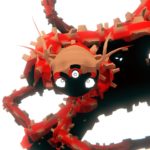
Ian Cheng, BOB (Bag Of Beliefs), artificial lifeform, 2018-2019. Images courtesy of the artist.
I also think babies and toddlers are like crack in the best way. They don’t know our language but somehow they’re the most expressive and better communicators, because they’re feeling-based.
I’m so interested in this idea that like, we love dogs because they’re kind of child-like, and they make us feel like we’re kids, because they feel like they’re kids, whereas humans actually think they’re adults and they’ve got to act accordingly. And I feel like the reasons we like kids and dogs are very similar, because they don’t have a lot of trouble communicating with us. There’s a lot of immediate empathy that we feel. And I feel like when an artist makes a piece of work and it’s really good, there’s a lot of ineffable elements that happen between people who are into the work, that make them feel like, ‘Wow, I’ve never seen anything like this before’. I think of this collaborative spirit more than I do competition.
“I really wanted to create a language for BOB that had an excessive gesture. I think art is a vector to really be exuberant. With so much of the art that I dislike, you can sense the hastiness or not even the lack of love, but the non-consideration of doing something exuberant for the viewer, and for yourself. I like watching Star Wars because I can tell George Lucas loved thinking about quirky little aliens, what their culture and language is, what kind of ships and cars they drive. A lot of it is juvenile and corny but you feel his love – it’s such a boost for me to be around that, I just wanna drink the Kool-Aid of positive creative energy.”

BOB: Ian Cheng, BOB (Bag Of Beliefs), artificial lifeform, 2018-2019. Images courtesy of the artist.
I’m just imagining like a line of a million people, like going to see the movie Star Wars, and they all get into the movie without signing a waiver and you can’t get the popcorn without signing the waiver. And then there’s like a hundred thousand people in the line and they’re all holding these waivers, and they’re all saying they don’t really like the movie, but they’re all there because all of their friends are there. In the art world – and I’m sure this has been said before – but I feel like there’s a ton of good art, but it’s not interesting because there are not enough people there looking at it.
Life After BOB, Cheng’s latest project, continues the interactive narrative environment initiated with BOB. Inspired by Cheng’s daughter, Eden, who declared her desire to portal into the World of The Hungry Hungry Caterpillar, Life after BOB is a trojan horse of an entertaining narrative that gets viewers into a simulation exploring co-cognition with AI. As an episodic series, Life After BOB’s first story involves Chalice, a 10-year old girl with an AI (“BOB”) installed within her neural system – a kind of posthuman experiment at the hands of her mad scientist father.
Utilizing a mix of classic animation and an interactive interface that allows users to experience all the details of this world at their own pace and narrative impulse, Life After BOB also features a digital encyclopedia that’s fully editable by viewers. Moving one step further into a shared virtual environment, this chimeric catalog of plants, animals, and characters continually transforms the on-screen work: allowing its users to portal into an ever-unfurling, ever-chaotic, collaboratively-built narrative ecosystem – a World brimming with exuberant aliveness.
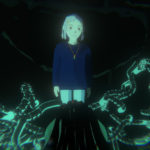
Ian Cheng, Life After BOB: The Chalice Study, 2021. Live animation, color, sound, 48 minutes. Images courtesy of the artist.
Of course, I realized that as I was playing with these games, I was sort of playing with toys. You think about the worlds of virtual reality, they’re incredibly constrained small boxes. Like a table or a hallway, like one meter long in a sim of reality or world making. But at the same time, those worlds are still the places where we feel the most creative.
I was just thinking about how I would apply that principle of a dog’s love to a virtual world. So if you know what the baseline creature or avatar is supposed to be able to feel, you could imagine that you would be able to somehow build in this heartbeat. And then you could build in a sense of happiness or sadness, the ability to recognise time, and the ways in which you have to then give that animal form, that avatar or creature, more time with the user. So that they can recognise and then learn to call out the ways in which they want to feel entertained, or just how they want to feel. So let’s say if a corgi sits down, what does it feel like? Can we build a device that when it sits down there is a way to communicate it with different frequencies?
Ian Cheng, screen capture excerpt from Emissary Sunsets The Self, live simulation and story, infinite duration, 2017.